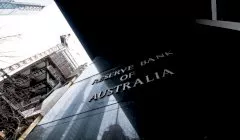Invest
Unlisted property: The asset class every investor needs to know about
Beyond the opportunity to diversify, unlisted property funds can offer an attractive yield and tax benefits for investors, writes fund manager Hamish Wehl.
Unlisted property: The asset class every investor needs to know about
Beyond the opportunity to diversify, unlisted property funds can offer an attractive yield and tax benefits for investors, writes fund manager Hamish Wehl.

For many Australians, property means the family home or a residential property investment.
However, property doesn’t just mean white picket fences and shiny new apartments. As the residential housing market becomes increasingly tumultuous, individual investors should consider diversifying into alternative property classes, such as unlisted commercial property.
Strong return potential
The Australian Commercial Property sector delivered a return of 9.5 per cent for the 12 months to 31 March 2019. Over five years, the sector has delivered annualised performance of 11.5 per cent, offering investors attractive and stable monthly income, especially in today’s low-rate environment.

Like residential property, income from commercial property is derived from the rent paid by tenants. However, security of income from unlisted commercial property is materially higher than residential property due to the binding and longer-term nature of commercial leases and the financial covenants of the underlying tenants.
The nature of unlisted property means, unlike A-REITs, it has a low correlation to equity markets, and as part of a diversified portfolio, can help provide consistent portfolio returns for investors over the long term.
Tax-deferred income
Tax-deferred distributions are an attractive feature of many property investments and can provide a substantial boost to your after-tax-income. In a world of low inflation and low interest rates, the benefits of tax-deferred distributions are extremely attractive to retail investors.
Under the current system, a portion of a property trust’s distribution usually consists of a tax-deferred component, which has the potential to greatly increase the investment’s return after tax. This is due to the trust’s ability to claim tax deductions for items such as depreciation, capital allowances, as well as the cost of raising equity and establishing the debt facility.
Some benefits of this are:
- The tax-deferred component can be reinvested, and the compounding benefit of this can add up over time;
- The tax-deferred component is usually subject to the 50 per cent or 33.33 per cent CGT discount if the asset has been held for longer than 12 months; and
- The deferral opportunity can offer tax planning opportunities. For example, tax-deferred distributions received before retirement may effectively be received tax free if the units are disposed of after transitioning to pension phase.
An array of assets and different investment options
Investing in unlisted property provides access to a wide variety of commercial assets, including high-quality office buildings, retail shopping centres, industrial properties, as well as specialist properties such as hospitals, medical centres, childcare centres, and retirement villages.
These assets often have attractive characteristics, including good locations, long lease terms, stable blue-chip or government tenants, and regular, stable income.
For these reasons alone, unlisted property warrants a closer look for investors.
Gaining access to these assets can be done through an open-ended fund or a fixed-term, closed-ended trust. With minimum initial investment amounts as little as $10,000, investing in a fund or trust provides greater accessibility and is far more cost-effective compared to purchasing a commercial property directly, an option generally only available to extremely wealthy investors.
Fixed-term, closed-ended funds usually hold one or more properties which must be held for a specified period of time, usually five to ten years. At maturity, usually the default outcome is that the property is sold, the trust wound up, and investors paid out.
Alternatively, open-ended funds do not have a maturity date or a finite number of units. Open-ended funds create liquidity by holding some of the fund’s assets in cash, using new investors’ funds to pay out exiting investors, increasing debt or selling assets if necessary.
These funds tend to hold a number of assets to increase diversification, but it is at the manager’s discretion to decide which assets to buy or sell.
Is unlisted property for you?
Commercial property can be a great way to diversify an investment portfolio which could already include residential property, shares, and bonds.
Investing in an unlisted property fund, run by a skilled and trusted manager who can diligently acquire the right property, add value through quality management, and manage the day-to-day operations can make commercial property a relatively simple asset class to invest in.
The key is to make an informed choice to find the right manager and portfolio to deliver the regular income and capital returns that are intrinsic to this asset class.
Hamish Wehl is the head of retail funds management at Cromwell Property Group.

Property
Retirement communities: a pivotal element in meeting Australia's housing targets
The Retirement Living Council (RLC) has recommended that retirement communities should be considered a vital part in the Australian Government's initiative to fulfill the Housing Australia Future Fund ...Read more

Property
Australians adjust financial strategies amid changing property market dynamics
The 2023 calendar year saw Australian borrowers acquiring a total of $300.9 billion in new loans for property purchases, marking a 12.7% decrease from the previous year. Read more

Property
Split home loans unlocking doors for Aussie buyers
Australians are teaming up to dive into the real estate market and seize the advantages of home ownership, with the trend of split home loans surging as family and friends unite to buy properties ...Read more

Property
Real estate investment: Spotting high-growth potentials
Investing in real estate has long been a favoured approach for Australians looking to grow their wealth. Read more

Property
Granny flats become Aussie families' cost-effective solution to soaring living costs
As the cost of living skyrockets, a forward-thinking trend is sweeping across Australia – granny flats are becoming a favoured living arrangement for older Aussies seeking comfort and proximity to ...Read more

Property
Homebuyers grapple with extended savings period amid affordability crisis
Gone are the days when an Australian dream home seemed just within reach. The path to homeownership in Australia has extended by at least two arduous years, as revealed by the latest insights from ...Read more

Property
Hybrid development unlocks new potential for NDIS housing in metro hotspots
In a ground-breaking strategy aimed at addressing the stark imbalance between the location of Specialist Disability Accommodation (SDA) developments and the actual areas of demand, Aligned Disability ...Read more

Property
Property prices boosted by housing policies: RBA
The central bank has outlined the “pervasive” impact that policy has on property. Read more

Property
Retirement communities: a pivotal element in meeting Australia's housing targets
The Retirement Living Council (RLC) has recommended that retirement communities should be considered a vital part in the Australian Government's initiative to fulfill the Housing Australia Future Fund ...Read more

Property
Australians adjust financial strategies amid changing property market dynamics
The 2023 calendar year saw Australian borrowers acquiring a total of $300.9 billion in new loans for property purchases, marking a 12.7% decrease from the previous year. Read more

Property
Split home loans unlocking doors for Aussie buyers
Australians are teaming up to dive into the real estate market and seize the advantages of home ownership, with the trend of split home loans surging as family and friends unite to buy properties ...Read more

Property
Real estate investment: Spotting high-growth potentials
Investing in real estate has long been a favoured approach for Australians looking to grow their wealth. Read more

Property
Granny flats become Aussie families' cost-effective solution to soaring living costs
As the cost of living skyrockets, a forward-thinking trend is sweeping across Australia – granny flats are becoming a favoured living arrangement for older Aussies seeking comfort and proximity to ...Read more

Property
Homebuyers grapple with extended savings period amid affordability crisis
Gone are the days when an Australian dream home seemed just within reach. The path to homeownership in Australia has extended by at least two arduous years, as revealed by the latest insights from ...Read more

Property
Hybrid development unlocks new potential for NDIS housing in metro hotspots
In a ground-breaking strategy aimed at addressing the stark imbalance between the location of Specialist Disability Accommodation (SDA) developments and the actual areas of demand, Aligned Disability ...Read more

Property
Property prices boosted by housing policies: RBA
The central bank has outlined the “pervasive” impact that policy has on property. Read more






